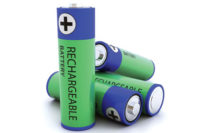I approached a couple of employees just before start of their shift and asked if one of them would volunteer to wear an air sampling pump. One employee responded, “If you tell me who you voted for president, I might wear the pump.” I knew at that point that I’d get some honest results from industrial hygiene (IH) sampling.
True exposures
Experienced IHs will confirm that employees may greatly influence air sample results to make the results abnormally good or bad. This is especially true when conducting employee air sampling in environments such as manufacturing or construction for chemicals with a low eight-hour TWA exposure limit, such as manganese fume with a 0.02 mg/m3 TLV.
Both “grab” and “area” TWA samples may be used to gain confidence for true employee exposure results, but these indirect samples may interfere with how the employee normally works. Taking multiple daily employee air samples over multiple days will refine true exposure, but often at a prohibitive cost in time and lab fees.
The reality for most IH sampling is that the forecast for an employee’s long term exposure to a chemical is based upon sample results from one “normal” day of exposure. False negative results may allow an employee to be exposed to potentially harmful chemical concentrations for a long time. False positive results may result in needless expense for control.
It is imperative that an IH find the truest exposure result from one day of sampling. An employee’s work practices for that single day are often the most important variable in finding the true result.
Behavior of chemicals
Chemicals reduce from a maximum concentration as the distance from the chemical’s point source increases. The reduction in concentration is influenced by several key variables, with rate of chemical generation and air currents generally being the most important. Use of a Smoke Tube is one way to visualize this process.
Air sampling media must be placed in the “employee’s breathing zone” to obtain true results. This is mostly accomplished by attaching the media to the employee’s shirt collar. Finding results above or below a chemical’s OEL may depend upon which side of the shirt collar the media is attached and includes the height of the employee. A little distance with placement of sample media can make a big difference in exposure results.
Behavior of sampled employees
Regardless of how precise work instructions may be, each employee will perform work slightly, and sometimes significantly different than their peers. If product quality, production efficiency and injury avoidance are maintained, management generally won’t quibble with variance in employee work practices. Illness prevention from acceptable chemical exposure, however, is often not readily observable. Thus, the need for IH sampling.
A main objective during sampling is to get the employee to behave as normal as practical while they wear sampling media while they work. The best way to accomplish this objective is to fade the sampling media and IH out of the employee’s mind.
Non-intrusive sample media
Media should be as non-intrusive and as comfortable to wear as practical. For example, where practical an OVM badge is preferred over a battery-powered pump with absorbent tube. Battery-operated pumps should be small, light-weight and quiet. Place the pump in an insulated pouch to further reduce noise and vibration. Connect the pump on the employee’s back-side or hip; rarely connect to front waist. If the employee has their own belt, use it to connect the pump. Otherwise, have a belt of sufficient length for use — be alert that some employees have wide waists! Make sure that pump/media tubing is long enough not to tug to employee’s clothing. Use at least three clips to limit tubing movement and detection by the employee.
Turn-offs: Appearing aloof
Because many IHs have a science-related education, they often come off as nerdy in mannerism and dress. Many IHs are protective and meticulous with sampling equipment that gives the impression that only they can affix pumps and media to an employee. Many are prodigious note-takers, fostering the appearance of being aloof and not engaged with an employee at a personal level. These and similar turn-offs make employees nervous, sometimes combative. This often results in abnormal work by the employee that in turn may create abnormal exposure results. I did much, if not all the above, in my early IH years.
IH “artist”
IH is both a science and an art. IHs tend to hone their craft overtime to subdue overt science tendencies and become more artful in appearance and practice. A good IH artist puts employees and management at ease to help achieve normal work practices while the IH acquires, with limited intrusion, all the scientific information necessary to determine true exposure results.
How does one become an IH artist? Above all the important technical traits, first impressions must come first. Employees must perceive an IH as non-threatening, yet competent and helpful. People skills, however accomplished, in dress, mannerisms, speech, and so are needed. In turn, the IH must promptly size up each employee they meet. Remember, it’s generally one-day sampling that must start off on the right foot. There’s no direct path and no set time to become an IH artist.
Go back to the opening paragraph. Note that I was alone and not accompanied by a management representative – this was a planned strategy. Who and where I wanted to sample was determined by a walk-around with management the previous day. Approaching employees alone was an art decision for this sampling.
Would you talk politics with the employee? I did. I had some feeling of the employee’s political interest. Our brief but meaningful conversation turned out very well. The employee not only was very cooperative in wearing the pump, he also diffused any concern of my intentions among his fellow employees during breaks and lunch. I trust the sample results I got that day across the plant were “normal.” I had a concern if this would be the case prior to sampling.
Bottom line
The art of IH is just as important as the science. Unfortunately, training courses and texts for IH art are limited while science IH courses and texts are plentiful. This means you will mostly need to hone your IH art through supervisor and peer feedback that is rarely formalized. Continuing to learn and practice people-skills, with a genuine appreciation of people-skill value, will help make you a good IH artist that helps obtain “normal” results.




